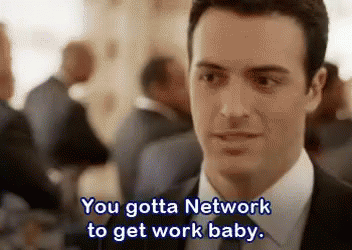Creating a community isn't just nice, it's a powerful asset that can transform your business.
Communities bring people together through shared goals and transitions. When done right, they grow on their own, thanks to something called "people magic." This network effect makes your community more valuable and fun for everyone involved.
Understanding the Power of Community for Creators and Entrepreneurs
Why Communities Are Your Best Asset
Unlike static content, a community lets members meet, share, and grow together. This creates connections that multiply over time. Big platforms like Facebook, Instagram, and WhatsApp are prime examples—they thrive because of relationships, not just content. When members talk, reply, and help each other, the community gets stronger without more effort from you.
How Building Communities Is More Rewarding
Communities are more fun for members and more profitable for you. They fuel trust, loyalty, and recurring income. You can monetize through memberships, courses, live events, or challenges. Over time, your community becomes a hub of transformation, keeping members engaged and eager to stay.
Recognizing When a Community Is At Risk of Dying
Warning Signs of a Failing Community
If your community mainly shares vague goals like "learn, share, grow" without a clear focus, it's a red flag. Weak culture and rules that discourage good behavior can push members away. Instead of storytelling and real experiences, members just toss advice back and forth, causing engagement to die down.
Key Metrics That Signal Trouble
A big number of members doesn’t matter as much as the connections between them. Commenting, direct messaging, replying—these are signs of healthy engagement.
Recently, a team predicted 93% of community failures just by looking at how many members reply and connect with each other, not stats like size or content.
The Core Principles of a Healthy Community
Focus on Relationships, Not Just Content
Your community should be about building real bonds. The difference between an audience and a community is the relationships members create. This bond, called "people magic," fuels growth and engagement. You make money when members connect and help each other stay motivated.
Define Your Community's True Purpose
You need to know what transition your community helps members with. Is it launching a new business? Building a skill? Clarify this so your pitch talks about their "best year ever." When you craft your message around transformation, members see real value and want to stay involved.
Practical Ways to Revive or Grow Communities
Creating Containers for Connection
Set up routines that make your community lively without extra work. Use monthly themes to introduce new topics. Build weekly activities into the schedule so members get into habits. And add quick daily polls to spark quick conversations.
Building a Culture for Engagement
Encourage storytelling and sharing ideas. Set simple, positive rules that help everyone connect better. Focus on member contributions rather than strict rules about what not to do. Make your community welcoming and member-centric.
Using Network Effects for Growth
Attract members who are in the middle of big changes. For example, someone wanting to earn $10K a month is highly motivated. When members see others succeeding, they want to invite friends. Motivations like wanting to look smart or be helpful drive natural growth. The more meaningful connections, the more members come back.
The Best Tactics for Managing Communities
Nominations and Invitations
Instead of open sign-ups, consider having members nominate others. This keeps your community quality high. You can combine open launches with invite-only entry, especially for paid communities. This builds credibility and keeps standards high.
Balance Engagement and Churn
Set regular check-ins, like seasons or quarterly reviews, to see if the community still fits members’ needs. Keep onboarding fresh members while maintaining engagement with existing ones. When a community starts to decline, ask if it’s still about helping members through transitions.
When to Start Fresh or Revive
If your community is drifting without clear purpose, it might be time to restart. Focus on the transitions members are in now. If your community isn’t delivering results, see if you can reframe or rebuild around a new focus. Sometimes, a fresh start works better than trying to revive something old.
Building on the Right Technology
Choosing the Right Platform
Platforms like Facebook, WhatsApp, and Slack are familiar but often don’t foster deep connections. Dedicated community apps like Mighty Networks allow more control. They let you customize profiles, surface relevant members, and automate routines.
Using "People Magic" in Software
The secret of "people magic" is surfaces and profiles that help members find and connect with relevant people. For instance, custom fields can highlight members’ skills, goals, or projects. Intelligent suggestions and dynamic profiles lead to deeper, more meaningful relationships.
Partnering to Add Value
Collaborate with tools like email platforms—think ConvertKit—that integrate with your community. These connections amplify your network effect, allowing members to grow their contacts and engagement beyond your platform. Integration makes your community more vibrant and easier to grow.
Positioning and Branding Your Community Effectively
Creating Unique Terms and Frameworks
Use branding concepts like "people magic" or "flywheels" to set your community apart. Giving your ideas a name helps members understand and remember them. Think of it as creating a category that you own—a way to stand out.
Clarifying Your Purpose and Transition
Your community should focus on a clear member transition. For example, helping writers finish their first book or coaches get their first clients. Your messaging should emphasize the transformation members get—like their "best year ever."
Lessons from Top Community Creators
Examples of Innovative Leaders
People like Christopher Lockhead create categories that define whole markets. Jason Gard from Mastermind Talks keeps a good balance—about 70% returning members, 30% new. They use nominations and shout-outs to build a positive culture.
Practical Techniques They Use
- Encourage members to nominate others genuinely
- Share success stories to inspire
- Keep onboarding fresh with new themes and routines
- Limit entry to high-quality members to maintain culture
When to Start Fresh or Try to Save a Dying Community
Assessing Community Health
Ask yourself: Are members seeing results? Is the purpose still clear? If not, shifting focus might help. Sometimes, a community's decline is a sign to pivot to a new transition or create a new one. If the core value is gone, a fresh start is better than trying to revive old issues.
Strategic Exit or Renewal
If you see no clear path to growth, consider winding down. If members still get value, reset and redefine what your community helps them achieve. The key is staying authentic and always focusing on member transitions.
Conclusion
Building a robust, engaged community is about relationships, not just content. Focus on what member transitions you help with and craft a clear story around it. Use routines like monthly themes, weekly activities, and daily quick polls to create consistent engagement. Always think about the network effect—how members connect—and let technology support those relationships. When you do, your community becomes a living asset that grows, thrives, and keeps members eager to stay. Start now—your most valuable asset awaits.




